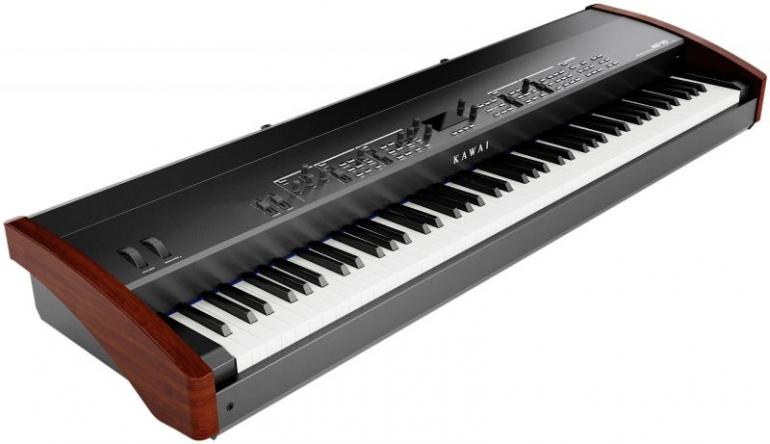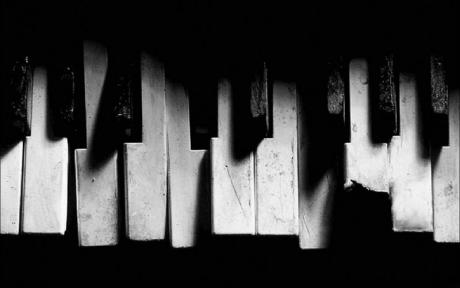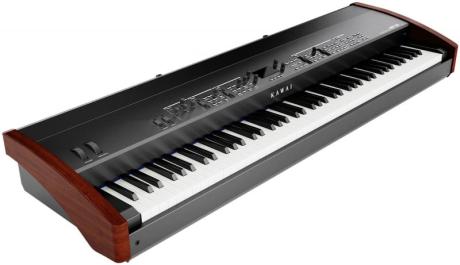Rockové klávesy - Digitální piano – nejlepší trefa do černého

Greetings readers! Welcome to another addition of Rock Keyboards. This month we will continue with part 2 of our digital stage piano shootout. This month we are going to talk about two more great stage pianos; the Yamaha CP88 and the Kawaii MP11. We will also pick a winner of the four keyboards we spoke of. Check out last months article for a full review of the other two stage pianos in the shootout, the Roland RD 2000 and Casio Privia Pro PX-560. The main qualities we will be looking for are ease of use in a live setting, sounds, and keyboard feel.

Yamaha CP88 Stage Piano
The CP88 is a packed 88-key stage piano with 128-voice polyphony, 57 voices, and the ability to double as a USB/MIDI interface. The well know line of pianos has been around since 1976 and does not dissapoint on this newest model. Featuring triple-sensor natural wood keys, the CP88’s action provides fast, accurate touch response with a real grand piano feel. The keyboard is designed very well with easy to see sound sections and color coding for very easy operation. The knobs and switches are very well made and feel of a very high quality. The sounds of the CP88 are also quite compelling. I especially like the Bösendorfer Imperial 290 model piano. Excellent electric pianos also abound including the original CP80, a funky Rhodes, and Wurlitzer A200. The CP88 also features a wide variety of other keyboard sounds including great organs, warm pads, brilliant brass, lush strings, clavinet, FM pianos, and many many more. These sounds can be split, layered for even more control. The interface is very well designed and the instrument feels great in live performance.

Kawai MP11
Although a little difficult to find and built like a tank, The Kawai MP11 boasts "Grand Feel" wooden key weighted action and sounds that are simply stunning. The MP11's realistic action incorporates triple sensors and something they call let-off for just the right action. With the “ivory touch” keys you with think you are playing a real piano. The MP11 includes 12 concert, jazz, and pop grand piano sounds, great vintage electric pianos, 129 effects all with heavy editing capability, a USB recorder, great MIDI and USB solutions, and a triple pedal assembly just like a real piano. My favorite feature on the MP11 is called Virtual Technician and lets you customize virtually every element of the piano sound.
... and the winner is
I’m going to have to go with the Yamaha CP88. I’m not sure if it’s the forty years of history behind the line or the sexiness of the controls, this is just the best stage piano in our shootout. Everything is right where you need it to be. The knobs and color schemes are easy to see, the knobs are very well made, and the action and sounds are amazing. I just got to play this instrument at The Brooklyn Synth Expo and was blown away. This is surely the best stage piano on the market.
Yamaha CP80: Když Biran zmiňuje tento zvuk jako jedno z elektrických pian nasamplovaných v modelu CP88 (podobnost jména jistě ne náhodná), rád bych se u něj zastavil. Mám totiž pocit, že je poněkud neprávem ve stínu modelů jako zmíněné Fender Rhodes nebo Wurlitzer. CP80 je mladší bráška modelu CP70 a liší se především o oktávu větším rozsahem. Typ CP70 (vyráběný v 70. a 80. letech) byl navržen jako přenosná elektrifikovaná verze akustického klavíru. Má skutečné struny, reálná kladívka apod. Snímání však probíhá elektromagneticky, takže je výsledný zvuk standardnímu klavíru poměrně vzdálen - a dobře že tak! Vznikl tak totiž jeden z ikonických zvuků z kategorie „electric grand“. Tony Banks z Genesis nebo John Paul Jones z Led Zeppelin na tyto nástroje nedají dopustit, stejně jako zástupy dalších klávesistů. A vědí proč...
Interface: Někdy nazývané „uživatelské rozhraní či prostředí“. S tímto pojmem se nejčastěji setkáváme v souvislosti se softwarem, ale i fyzické ovladače mohou být považovány za „interface“. V případě digitálního piana tak nějak očekáváme, že na rozdíl od složitějších syntezátorů nebudeme muset mačkat kombinace tlačítek a podobně (i když toto přání není zdaleka vždy vyslyšeno). Všechno musí být hezky po ruce a pokud možno tam, kde to čekáme. Ideální je, když má jeden ovladač vždy stejnou funkci, nikoliv kontextovou. A samozřejmě je důležitá čitelnost a přehlednost displeje, pokud je jím tedy piano vybaveno. To vše a mnohem více spadá pod „interface“, které Brian tolik chválí u Yamahy CP88.
Let-off: Synonymum pro pojem „escapement“. U akustického klavíru je důležitý mechanismus, díky kterému kladívko od struny po stisknutí klávesy odskočí, aby ji netlumilo. Při stlačení klávesy toto hráč cítí, a to nejvíce při rychlém opakování stejného tónu v nižších dynamických hladinách. Projeví se to jako určité těžko popsatelné „kliknutí“. Absence tohoto jevu u mnoha digitálních klavírů klasickým pianistům často vadí, a proto je příjemné, že dnes mnoho nástrojů (například zmíněný Kawai MP11) let-off simuluje.





